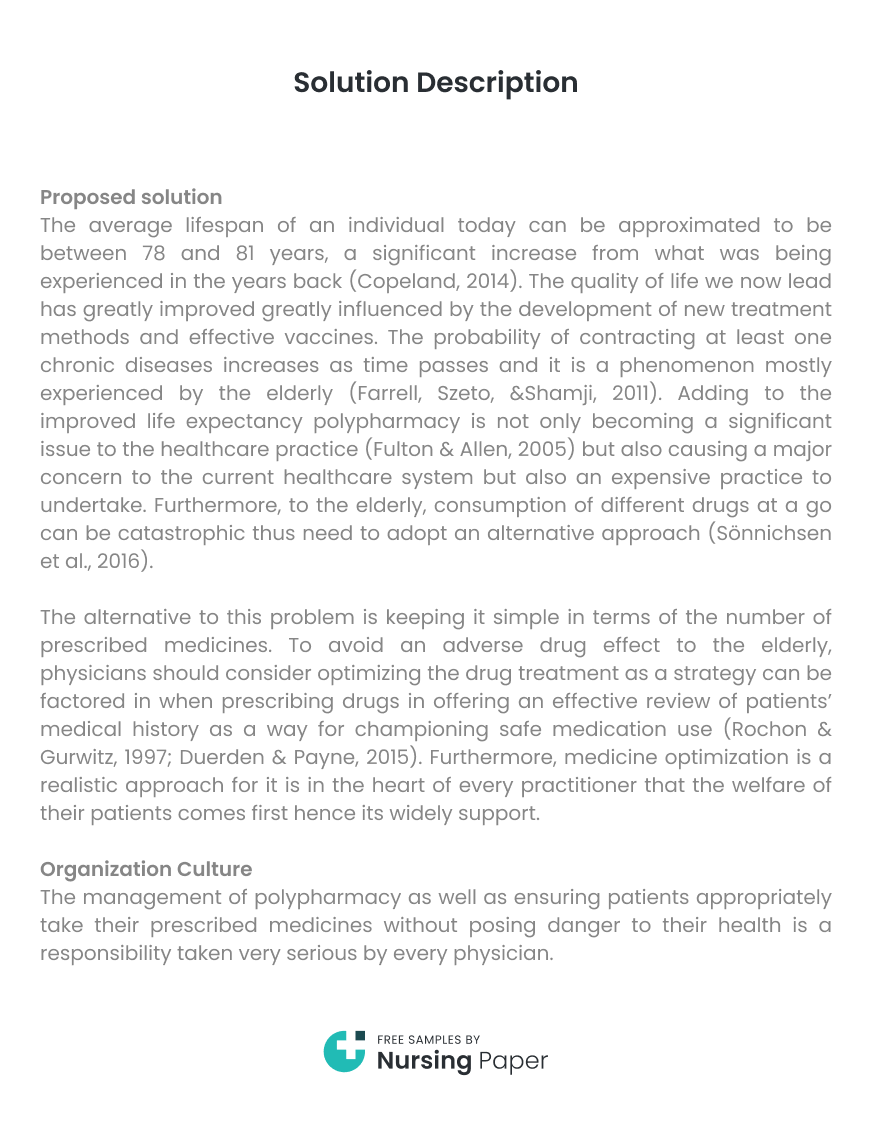1. Bushardt, R. L., Massey, E. B., Simpson, T. W., Ariail, J. C., & Simpson, K. N. (2008). Polypharmacy: misleading, but manageable. Clinical interventions in aging, 3(2), 383.
2. Copeland, L. (2014). Life expectancy in the USA hits a record high. USAToday. Accessed online May 6th, 2017 https://www.usatoday.com/story/news/nation/2014/10/08/us-life-expectancy-hits-record-high/16874039/
3. Duerden, M., & Payne, R. (2015). Regular review is needed for medicines optimisation. Prescriber, 26(6), 40-43.
4. Farrell, B., Szeto, W., &Shamji, S. (2011). Drug-related problems in the frail elderly. Canadian Family Physician, 57(2), 168-169.
5. Fulton, M. M., & Allen, E. R. (2005). Polypharmacy in the elderly: a literature review. Journal of the American Academy of Nurse Practitioners, 17(4), 123-132.
6. Glendinning, W. J. & Campbell, D. (2014). Medicines Optimisation Strategy2014-2019. North Cumbria University Hospitals. Accessed online May 6th, 2017 http://www.ncuh.nhs.uk/about-us/trust-board/2014/november/enc-12-medicine-optimisation-strategy.pdf
7. Goodheart, C. D., Kazdin, A. E., & Sternberg, R. J. (2006). Evidence-based psychotherapy: Where practice and research meet. American Psychological Association.
8. Hajjar, E. R., Cafiero, A. C., & Hanlon, J. T. (2007). Polypharmacy in elderly patients. The American journal of geriatric pharmacotherapy, 5(4), 345-351.
9. Harris, R. & Harling, A. (n.d). Establishing a programme of medicines optimisation support in care homes. The Clinical Pharmacy Congress.
10. Kalisch, L. M., Caughey, G. E., Roughead, E. R., & Gilbert, A. L. (2011). The prescribing cascade. Australian Prescriber, 34(6).
11. Oboh, L. (2015). Medicines Optimisation in frail, older adults with Multiple Long-Term Conditions. Journal of Medicines Optimisation• Volume, 1(1), 12.
12. Rochon, P. A., &Gurwitz, J. H. (1997). Optimizing drug treatment for elderly people: the prescribing cascade. BMJ: British Medical Journal, 315(7115), 1096.
13. Royal Pharmaceutical Society (2013). Medicines Optimisation: Helping patients to make the most of medicines. Accessed online may 6th, 2017 https://www.hee.nhs.uk/sites/default/files/documents/helping-patients-make-the-most-of-their-medicines.pdf
14. Schardt, C., Adams, M. B., Owens, T., Keitz, S., & Fontelo, P. (2007). Utilization of the PICO framework to improve searching PubMed for clinical questions. BMC medical informatics and decision making, 7(1), 16.
15. Sönnichsen, A., Trampisch, U. S., Rieckert, A., Piccoliori, G., Vögele, A., Flamm, M., … & Höck, J. (2016). Polypharmacy in chronic diseases–Reduction of Inappropriate Medication and Adverse drug events in older populations by electronic Decision Support (PRIMA-eDS): study protocol for a randomized controlled trial. Trials, 17(1), 57.

The download will start shortly.



 Subject:
Subject:
 Number of pages: 2
Number of pages: 2